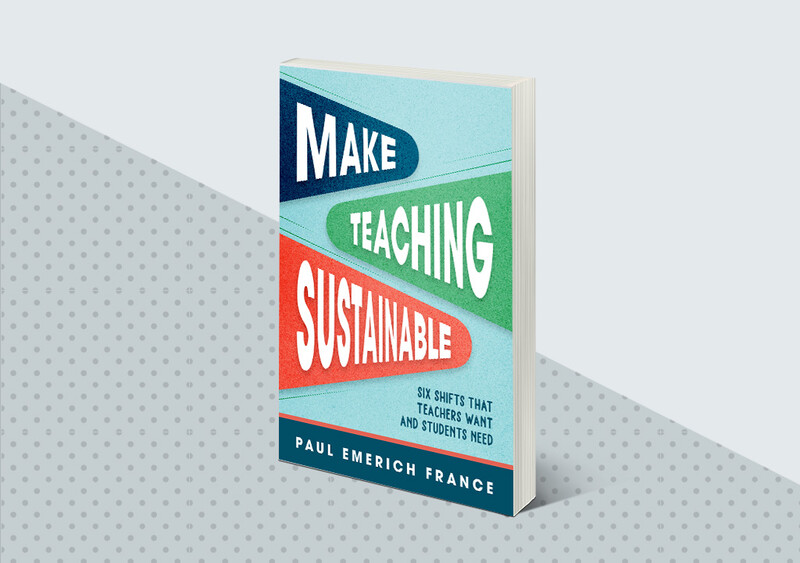Education is experiencing a shift toward the science of reading and writing—and it’s clearly working. The University of Florida Literacy Institute has released a program that has led to “dramatic” results (Schwartz, 2025). I’ve witnessed these results firsthand. Why does it work? Because we have known for decades that students need explicit and systematic instruction in phonemic awareness, phonics, spelling, and sentence structure.
The next step in this work is getting kids writing across the curriculum, and this can be achieved through cognitive writing, another practice that advances achievement (Goodwin & Rouleau, 2023). Traditionally, writing instruction has been a subject area, with learners writing narrative, informational, or persuasive pieces. But this is not reflective of adult writing, which tends to be on-demand and short-form, much like an email, text, or brief proposal.
In an on-demand writing prompt, students write about subject-specific content (i.e., Why did the colonists revolt against the British?) or reflect on learning habits (i.e., What helped you solve today’s problem?). Teachers must appropriately scaffold cognitive writing to ensure success. Consider the following recommendations for cognitive writing.
1. Assess Student Writing
Effective writing assessments use quantitative and qualitative metrics. Curriculum-based measurement (CBM) provides reliable quantitative data on writing fluency, including total words written (TWW), words spelled correctly (WSC), and correct writing sequences (CWS) (Fuchs et al., 2014). A three-minute writing prompt establishes a baseline for these metrics, informing goal setting around writing fluency. For example, if students average 7 CWS in a baseline assessment, teachers can model writing with 10–15 CWS to avoid overwhelming students. Use learner-friendly rubrics like Figure 1 to emphasize qualitative metrics.
2. Generate Tasks
In My Kids Can’t Write (Corwin, 2025), I offer teachers the Structure of the Observed Learning Outcomes (SOLO) Taxonomy (Biggs & Collis, 1982) for generating writing prompts. The SOLO Taxonomy provides five levels of task complexity. Teachers must consider task complexity to ensure access and appropriate levels of rigor. Figure 2 illustrates varying levels of complexity for writing tasks related to landforms, as an example.
3. Provide Scaffolds
Teachers must provide writing scaffolds so all students may access writing experiences. Scaffolds should address the root causes of students’ challenges.
For example, sentence frames help students generate ideas and language for responding to tasks. Moreover, concept maps organize students’ thinking before writing. Peer feedback, self-reflection tools, and strong classroom routines also support students in accessing writing experiences.
Be mindful. Over-scaffolding will create dependent learning habits. When applying a scaffold, create a plan for weaning students off the scaffold.
4. Reflect, Revise, Rewrite
Reflecting, revising, and rewriting are critical components of the writing process. All students, regardless of proficiency, should revise their writing.
To support reflection, provide students with learner-friendly success criteria, like that found in Figure 1.
Without clear success criteria, students offer vague reflections such as, “I need to write more.” A more productive reflection is, “Next time, I will add a personal connection.” Once students reflect, they revise or rewrite journal entries, applying reflections to future entries.
Some students may erase and fix their writing, but rewriting offers added benefits. Rewriting correctly reinforces positive habits. For instance, rewriting to correct capitalization provides students with experience capitalizing while writing sentences, not after the fact. Further, rewriting builds writing fluency: The cognitive demands of idea generation are reduced, so students can focus on writing smoothly and with proper conventions.
Writing Is Not a Subject
Making writing its own subject is unsustainable. It limits opportunities for students to apply writing skills, making teaching more difficult in other subjects. The more sustainable approach? Embed writing into all subjects as a way of being in the classroom. After all, writing is part of what it means to be human—and so we should give our students every opportunity to embrace this part of their humanity.
Make Teaching Sustainable
Paul Emerich France shares six mindset shifts to help educators sustain their energy and effectiveness while empowering their students.










